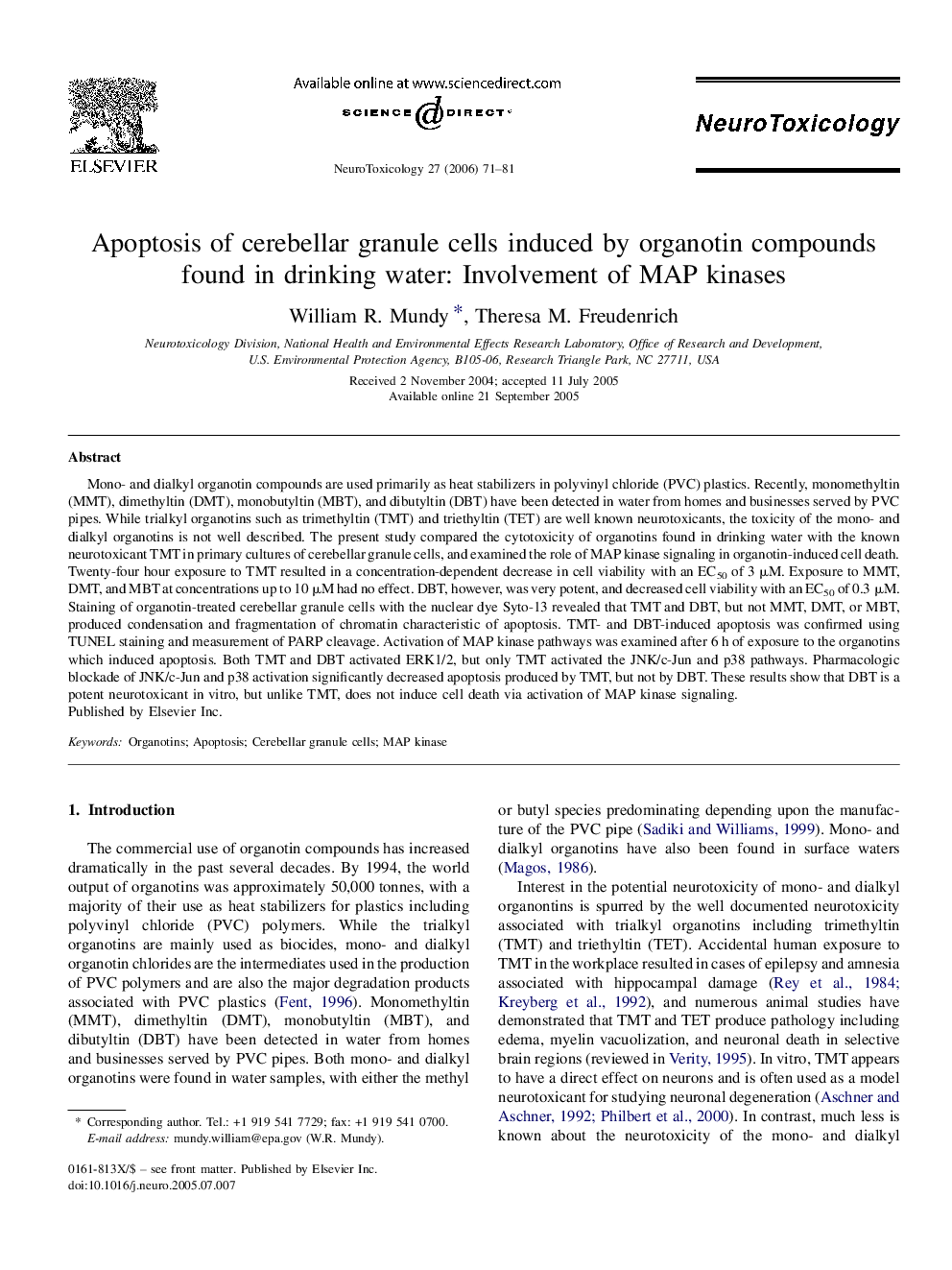| Article ID | Journal | Published Year | Pages | File Type |
|---|---|---|---|---|
| 2590787 | NeuroToxicology | 2006 | 11 Pages |
Mono- and dialkyl organotin compounds are used primarily as heat stabilizers in polyvinyl chloride (PVC) plastics. Recently, monomethyltin (MMT), dimethyltin (DMT), monobutyltin (MBT), and dibutyltin (DBT) have been detected in water from homes and businesses served by PVC pipes. While trialkyl organotins such as trimethyltin (TMT) and triethyltin (TET) are well known neurotoxicants, the toxicity of the mono- and dialkyl organotins is not well described. The present study compared the cytotoxicity of organotins found in drinking water with the known neurotoxicant TMT in primary cultures of cerebellar granule cells, and examined the role of MAP kinase signaling in organotin-induced cell death. Twenty-four hour exposure to TMT resulted in a concentration-dependent decrease in cell viability with an EC50 of 3 μM. Exposure to MMT, DMT, and MBT at concentrations up to 10 μM had no effect. DBT, however, was very potent, and decreased cell viability with an EC50 of 0.3 μM. Staining of organotin-treated cerebellar granule cells with the nuclear dye Syto-13 revealed that TMT and DBT, but not MMT, DMT, or MBT, produced condensation and fragmentation of chromatin characteristic of apoptosis. TMT- and DBT-induced apoptosis was confirmed using TUNEL staining and measurement of PARP cleavage. Activation of MAP kinase pathways was examined after 6 h of exposure to the organotins which induced apoptosis. Both TMT and DBT activated ERK1/2, but only TMT activated the JNK/c-Jun and p38 pathways. Pharmacologic blockade of JNK/c-Jun and p38 activation significantly decreased apoptosis produced by TMT, but not by DBT. These results show that DBT is a potent neurotoxicant in vitro, but unlike TMT, does not induce cell death via activation of MAP kinase signaling.
